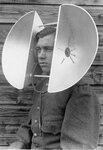GreenAce92
Member level 4
- Joined
- May 6, 2010
- Messages
- 70
- Helped
- 0
- Reputation
- 0
- Reaction score
- 0
- Trophy points
- 1,286
- Location
- Buffalo, NY
- Activity points
- 2,032
I am asking with regard to LIDAR, apparently there may be regulations that prohibited onboard lasers on aircraft although I'm not sure how Facebook's internet drones get passed that. At any rate, I would think sound "dissipates" rather quikcly or becomes large. If to be used for LIDAR application eg. 3D mapping of surrounding, also this question applies to IR. Is the focused part aside from uniform waves, through optics of strictly uniform waves?
